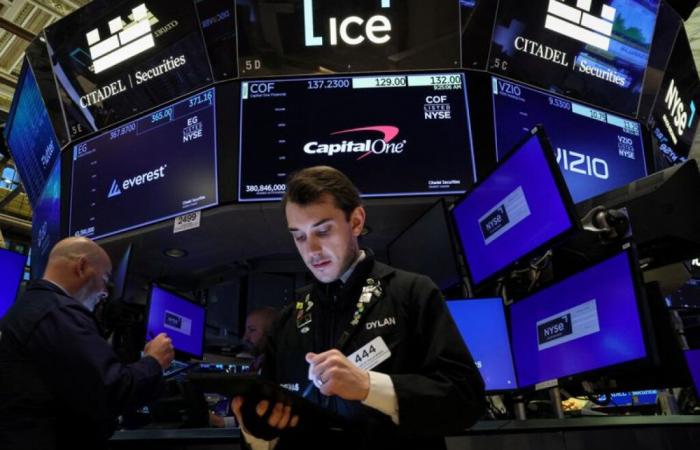Traders work on the floor of the New York Stock Exchange
The New York Stock Exchange opened without much change on Wednesday, with investors digesting US GDP figures while awaiting the PCE price index, a measure favored by the US Federal Reserve (Fed) to track inflation.
In early trading, the Dow Jones index gained 44.37 points, or 0.10%, to 44,904.68 points. The broader Standard & Poor’s 500 fell 7.93 points, or 0.13%, to 6,013.70 points.
The Nasdaq Composite lost 51.30 points, or 0.27%, to 19,124.27 points.
The second estimate of US GDP for the third quarter showed growth of 2.8% annualized on Wednesday, a sign of a still strong economy, while jobless claims in the country fell last week, to 213,000.
“The data wasn’t necessarily that far off expectations. I don’t view that as a real push one way or the other (on the Fed’s rate cut trajectory),” said Keith Buchanan, manager portfolio manager at Globalt Investments.
Short-term US bond yields continued to fall after these two statistics, easing some pressure on stocks.
The market is now awaiting the publication at 15:00 GMT of the PCE price index for the month of October. Economists polled by Reuters expect stagnation at 0.2% monthly but an increase to 2.3% on an annual basis after 2.1% in September. The Fed’s objective is to return inflation to 2%.
“Even though the market has largely turned the page on US inflation, a negative reading would reinforce doubts about the need for the Fed to cut rates in December,” ING analysts write in a note.
Minutes from the Fed’s November meeting, released Tuesday, showed that policymakers appeared divided on the extent of future policy rate cuts.
Traders currently expect a 68% chance of a 25 basis point (bp) drop in borrowing costs in December versus 63% previously, according to CME Group’s FedWatch barometer. They also anticipate rate cuts totaling around 75 bps by the end of 2025, up from around 250 bps in September, according to data compiled by LSEG.
Their concerns relate in particular to the program of US President-elect Donald Trump, who wants to reduce taxes and raise customs duties, which could reignite inflation, trigger a trade war and weigh on global growth.
Deutsche Bank economists estimate that these new tariffs could increase core PCE inflation in the United States from 2.6% to 3.7% in 2025, if fully implemented. Before Donald Trump’s victory, inflation was expected to be 2.3% for next year.
In terms of values, Dell fell 12.93% after announcing Tuesday evening a turnover forecast for the fourth quarter lower than Wall Street expectations.
HP Inc plunged 7.21% after publishing Tuesday evening a profit lower than Wall Street’s expectations for its first fiscal quarter.
In the wake of these two publications, Nvidia (-2.34%), Microsoft (-0.41%) and Apple (-0.14%) are in the red.
(Written by Claude Chendjou, with contributions from Johann M Cherian in Bangalore)






